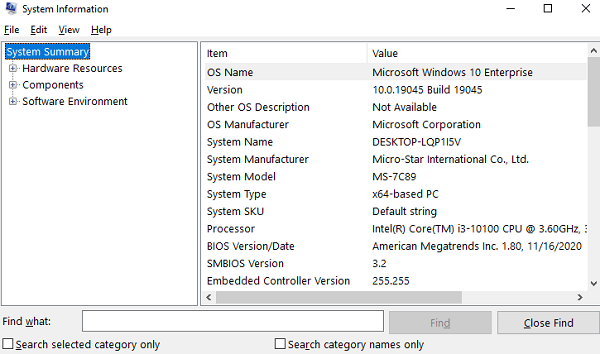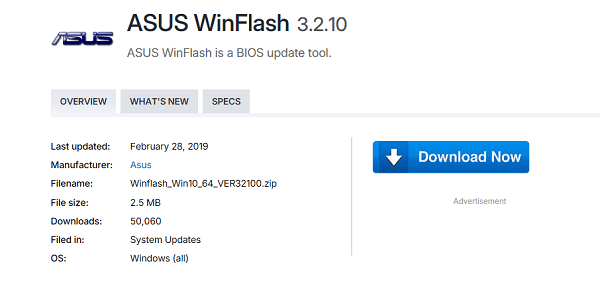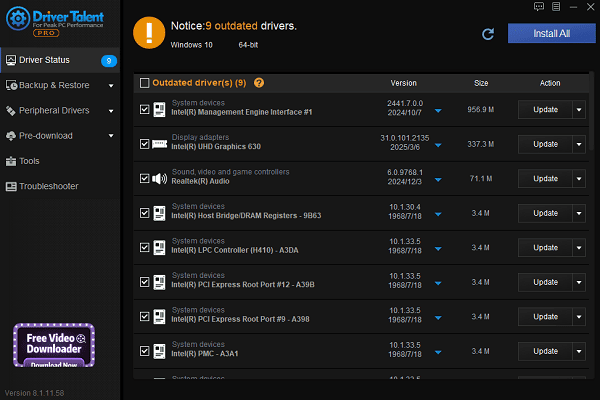
BIOS is essential firmware that plays a crucial role during a computer's startup and hardware initialization. Updating the BIOS can improve system stability, fix compatibility issues, and even support newer hardware.
However, because the process involves modifying the motherboard firmware, even a small mistake can render the system unbootable. Therefore, understanding how to safely update your BIOS is critically important.
This article provides a detailed guide on how to update the BIOS on a Windows system safely, along with key precautions before and after the process to ensure everything goes smoothly.
1. Why Should You Update the BIOS?
Updating your BIOS might be a wise move in the following situations:
To fix bugs or vulnerabilities in older BIOS versions
To improve compatibility with new hardware (e.g., CPU, memory, SSD)
To enhance system stability or performance
When recommended by the manufacturer (e.g., for security patches)
Note: If your system is currently running smoothly with no specific issues, frequent BIOS updates are not recommended.
2. Preparation Before Updating the BIOS
To avoid update failures, make sure to complete the following preparations:
Confirm Motherboard Model & Current BIOS Version:
Use the built-in Windows tool msinfo32 to check your current BIOS version and motherboard model.

Visit the Manufacturer's Official Website:
Go to your motherboard or device manufacturer's website (e.g., ASUS, GIGABYTE, HP, Dell) to find the matching BIOS update file for your model.
Carefully Read the Release Notes:
Ensure that the BIOS update includes fixes or improvements relevant to your needs to avoid unnecessary risks.
Back Up Data and Current BIOS Settings:
Updating BIOS doesn't delete data on your hard drive, but it's always a good idea to back up important files.
If you've changed BIOS settings (like boot order), take photos or notes to restore them later.
Ensure a Stable Power Supply:
Keep your laptop plugged into the charger.
For desktop PCs, consider using a UPS (Uninterruptible Power Supply) to prevent power loss during the update.
3. How to Update BIOS on Windows
Method 1: Use the Manufacturer's Official BIOS Update Tool
Most manufacturers offer dedicated BIOS update utilities that work within Windows. Examples include:
ASUS: WinFlash
GIGABYTE: @BIOS
HP: HP Support Assistant
Lenovo: Lenovo Vantage
Steps (Example: ASUS WinFlash):
Download and install the ASUS WinFlash utility.

Open the tool and choose "Update from file" or "Check online".
Select the downloaded BIOS file (usually in .CAP format).
Click "Start" to begin the update — do not interrupt the process.
After completion, the system will reboot and apply the new BIOS.
Method 2: Use Manufacturer Support Software
Branded PCs (e.g., Dell, HP, Lenovo) usually come with official update utilities that can detect and push BIOS updates automatically:
Dell: Dell Command | Update
HP: HP Support Assistant
Lenovo: Lenovo System Update
Simply open the software and choose "Check for updates".
4. What to Do After Updating the BIOS
Enter the BIOS setup (typically by pressing F2, DEL, or ESC during startup).
Check if settings like boot order and virtualization have been reset.
Confirm the BIOS version in Windows (Win + R > type msinfo32).
Boot into Windows, run frequently used programs or a stress test to ensure stability.
5. What If the System Becomes Unstable After BIOS Update?
Drivers are a critical component of system stability. If issues occur post-update, ensure that all drivers are up to date.
It's recommend to use Driver Talent, a reliable driver manager tool that can automatically detect, back up, download, and install the correct drivers.
Click the download button to get the latest version of Driver Talent. After installation, open the software and click "Scan".
The scan will list outdated or missing drivers. Click "Update" next to the necessary drivers.

Restart your computer after the updates to ensure the new drivers take effect.
6. FAQ – Frequently Asked Questions
Q1: Will updating the BIOS delete data on my hard drive?
No. BIOS updates only affect the motherboard firmware and will not alter any files. However, backing up your data beforehand is always a good idea.
Q2: What if Windows crashes or freezes during the update?
If the BIOS update is interrupted, your motherboard might not boot. Contact customer support or check if your motherboard supports BIOS recovery features.
Q3: Can I skip versions when updating BIOS?
It's best to update incrementally and not skip multiple versions unless the manufacturer explicitly states that you can jump directly to the latest.
7. Conclusion
While updating the BIOS does carry some risk, following proper precautions and step-by-step instructions can make the process relatively safe. Using official tools within Windows is the most user-friendly method for most users.
If you're using a branded computer or motherboard, it's strongly recommended to rely on the manufacturer's support software for automatic updates to minimize risk.
See also:
Top Solutions for PCI Device Driver Missing on Windows
Guide to Updating ASUS Motherboard Drivers for Smooth Performance
Solutions for PC Connected to Wi‑Fi but No Internet









